The pioneering Sisters
24 Oct 2016
24 October 2016
In the beginning
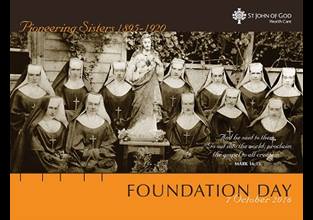
In the late 1890s Western Australia was undergoing significant change. As gold was discovered in Halls Creek, Cue, Coolgardie and Kalgoorlie, the population boomed. Between 1891 and 1901 the number of people living in WA quadrupled and infrastructure was spread thin.
Lack of housing to accommodate the growing population meant that tent towns were sprang up in Perth, Fremantle, Subiaco, West Perth and the Goldfields. Sickness was rife in these cramped living conditions. There was no running water or refuse disposal and soon typhoid and other diseases were at epidemic proportions. Typhoid is a water borne disease spread via contaminated food and water. Symptoms include high fevers, rashes, weakness, stomach pains, headaches, loss of appetite and delirium. It could lead to internal bleeding and death. It is estimated that in the 1890s more than 18,000 Western Australians contracted typhoid. The epidemic was the worst in Australia’s history and patients required constant nursing.
Bishop Matthew Gibney of Perth grew anxious about the need for hospitals and schools in the rapidly growing colony.
"It grieves me to see and hear of young men of splendid physique, and men of a generally hardy nature, dying off in such large numbers during the last summer from typhoid fever." - Bishop Gibney as quoted in W.A Record, 26 October 1895, 4.
Enter the Sisters
The initial plan was that the Sisters would base themselves in Perth. When they arrived they set about nursing the sick in their homes, as well as establishing the Adelaide Terrace Convent Hospital.In early 1895 Bishop Gibney wrote to Mother Stanislaus, Superior of the Sisters of St John of God Convent in Wexford, Ireland. He appealed to her to send sisters out to WA to help.
On 23 November 1895 the first eight sisters arrived on the RMS Orizaba from Ireland. The youngest was just 21 years old.
Called to the Goldfields
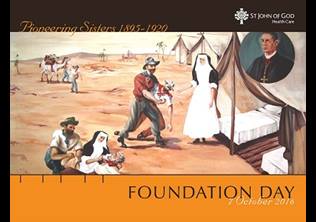
By early 1896 it became clear that the Sist
ers were needed in the Goldfields. Several sisters went on 'sick visits' to tend to particular patients. In late April, Sister Angela and Sister Magdalene travelled to Kalgoorlie to nurse a Mr Vine. They were instructed to leave as soon as he was well again, however they stayed until September, nursing from a tent loaned to them by a miner.
The first official St John of God Hospital was opened by Bishop Gibney in Coolgardie on 25 November 1896. It was funded and owned by a local committee. It cost 500 pounds and was made up of three timber framed canvas buildings.
By 1897 the gold rush population had begun to migrate to Kalgoorlie. So in March 1897 Bishop Gibney blessed and opened St John of God Hospital, Kalgoorlie. Dr Mattei was the resident medical officer and the staff comprised of six St John of God Sisters. Their numbers had been recently bolstered by the recent arrival of a further six Sisters from Ireland in December 1986. This hospital was timber-framed with weatherboard and a corrugated iron roof. Around this time the Sisters also established a number of schools.
A life of sacrifice
The sisters knew the risks of being in close contact with patients suffering infectious diseases. Those who went to the Goldfields knew they were to live in hot, dry, over-crowded conditions. Water was scarce, and at times, cost more than gold. Until 1910 they toiled in heavy habits, dresses and capes. The St John of God community remembers those pioneers who sacrificed their lives in service of the sick. Here are a few examples.

Sister Mary Bridget never had the chance to work at St John of God Hospital, Kalgoorlie. She died from typhoid a few days before the hospital opened and was buried in the Kalgoorlie Cemetery.

Sister Mary Joseph was placed in charge of St Mary’s High School in Kalgoorlie. She became ill in September 1904 and died from peritonitis (infection) a short time later. The local newspaper reported that ‘her loss will be keenly felt’.
Sister Mary Kevin initially nursed in St John of God Hospital, Kalgoorlie but after contracting a fever she returned to Subiaco. Five years later she returned to Kalgoorlie. Unfortunately she was soon ill again and died on 15 April 1902. The Kalgoorlie Miner reported "she bore her sufferings with patience and resignation, at times rallying and giving her friends hopes of seeing her again to continue the works of charity to which she sacrificed her life."

Sister Mary John survived the worst of many typhoid epidemics in Coolgardie and Kalgoorlie, only to sucuumb to exhaustion and tuberculosis at St John of God Hospital, Subiaco in 1916.
The beginnings of Subiaco 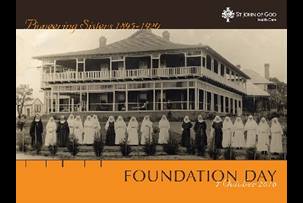
Back in Perth, the houses at Adelaide Terrace were rapidly becoming too small for the sister’s work. Bishop Gibney granted the sisters eight acres of land in Subiaco for a hospital, school and convent. Subiaco was considered ideal. It was a rapidly growing suburb, had a permanent supply of fresh water, was on a hill for ‘cleansing breezes’ and it was accessible from the railway line.
Bishop Gibney opened the hospital on 18 April 1898 in front of a crowd of 200 people, including Premier John Forrest. The building, which was funded by the Catholic Church and donations, was a distinct upgrade from the canvas of the Goldfields.
Invited East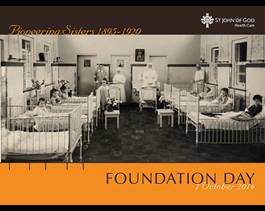
By the time the 20th century was underway the Sisters had made a reputation for themselves that spread across Australia. So much so, that Bishop Joseph Higgins from the Diocese of Ballarat invited the Sisters of St John of God to establish a hospital there. A disused mansion was purchased by the Diocese and St John of God Hospital, Ballarat opened on 15 May 1915. Sister Ignatius, who was at that time the Superior of St John of God Hospital, Subiaco accompanied a team of sisters to Ballarat for the opening.
In New South Wales, charitable couple Anastasia and Frank Kelly donated money to the Bishop Gallagher of Goulburn for the establishment of a Catholic hospital. Bishop Gallagher used the money to purchase a 13-room house in Bourke Street, but was unable to find a religious congregation from NSW to run it. So the Sisters of St John of God were invited to run the hospital, which opened 2 April 1916.
Living legacy 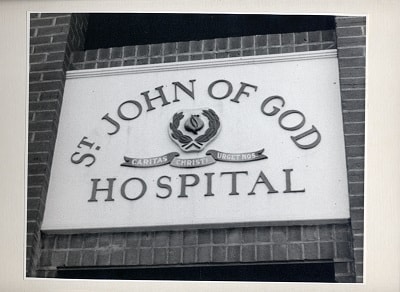
The Sisters of St John of God left the green shores of Ireland and devoted their lives to helping the sick and needy in harsh circumstances.
From a small congregation established in 1871, they branched out into Australia, where they became nursing sisters of national renown. By 1920 the Sisters of St John of God had established six hospitals across three states, seven schools, and a mission in the heart of the Kimberly.
Today their legacy lives on with 16 St John of God hospitals and numerous health care facilities across Australia and New Zealand. All of which strive to embody their values of hospitality, compassion, respect, justice and excellence
